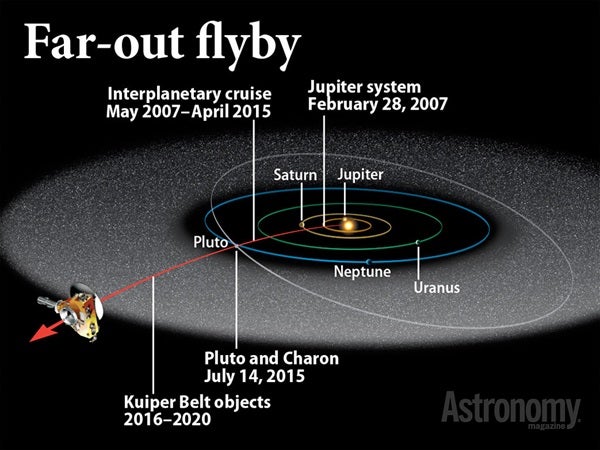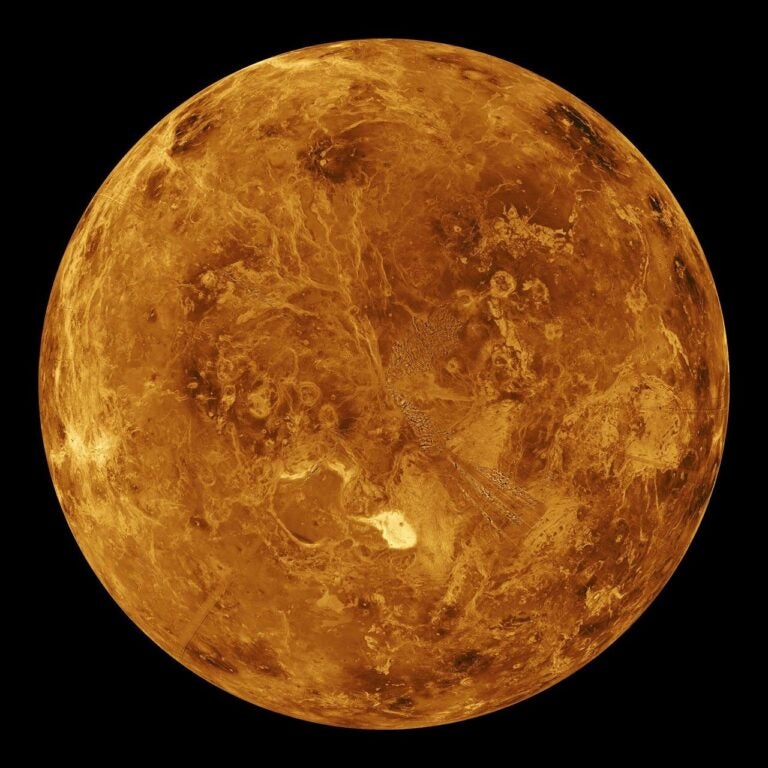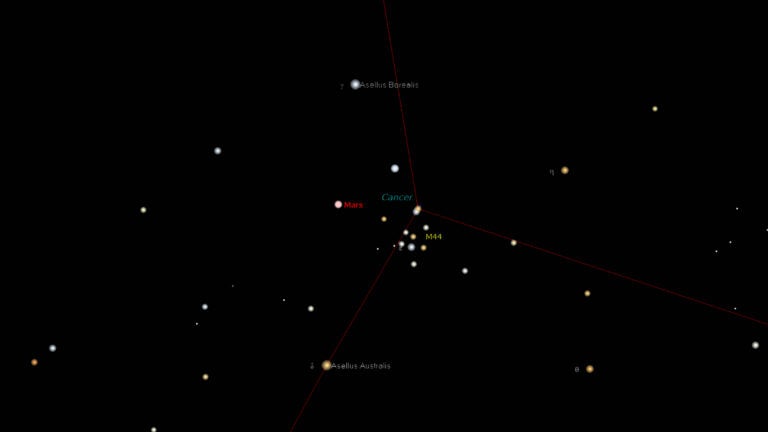Currently, the New Horizons spacecraft is traveling away from the Sun quite fast, about 9 miles (~14 kilometers) per second. If it burned all the hydrazine in its tank, it would accelerate by only about 1/8 mile per second (1/5 km/s). So it could speed up or slow down (depending on the direction of its thrusters) by only a tiny fraction of its velocity.
Adding much bigger fuel tanks to give New Horizons the ability to slow down would make it a lot heavier, which in turn would mean either a much bigger launch rocket (and a correspondingly much higher price tag) or a much longer trip time.
NASA’s Galileo and Cassini orbital spacecraft both went with the longer trip time option.
But their slower speeds were less painful because they didn’t have to go as far. Jupiter, Galileo’s target, orbits about 5 astronomical units from the Sun (1 AU is the average Earth-Sun distance), and Cassini’s Saturn orbits some 10 AU away. Meanwhile, New Horizons has its Pluto encounter out beyond 30 AU.
Because changing the budget wasn’t an option, the New Horizons team went with the light/fast option so as not to rely on the spacecraft (and team) surviving multiple decades before getting to its destination.
Also, NASA’s approach to exploration is step by step: start with flybys for initial reconnaissance, then do orbiters, and finally do landers, rovers, etc.










